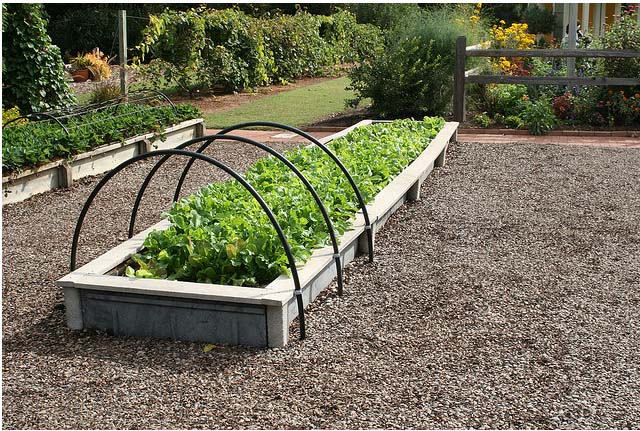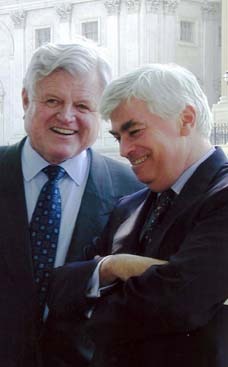
The freshest produce could be right outside your door if you plant your own garden. Whether you opt for a raised-bed, container or traditional garden, the benefits are bountiful. David Trinklein, a horticulture professor at MU, said the average return on investment in a garden is 20:1. I'm no economist, but getting $20 worth of produce for each dollar spent sounds pretty good. For just $2 in seeds, we had lettuce, spinach and sugar snap peas for four weeks this spring. Trinklein's advice: start small. Grow things that have the highest dollar value and high nutritional values such as tomatoes, beans and peppers. Everyone loves watermelon, but it's not a space-efficient crop and it doesn't have high nutritional value. It's not too late to transplant peppers, tomatoes and eggplant. Growing your own fresh produce will increase your consumption of healthy, fresh foods, and gardening burns about 300 to 400 calories per hour, roughly the same as briskly walking four miles. Speaking of miles, remember they're one part of the food equation. How you raise your food is equally important. If you want to avoid pest problems and stay free of chemicals, stay away from cucurbits, such as cucumbers, melons and squash, which attract cucumber beetles and squash bugs, said James Quinn, regional horticultural specialist for MU Extension and a home gardener. Companion plants such as marigolds with tomatoes might help deter pests, too. If you do feel the need to spray, follow directions and apply in the evening. The honeybees will likely be gone by then and won't carry the poisons back to the hive. Don't have the time for a home garden? Try a plot at a local community garden, collaborate with a neighbor, join a CSA or get your hands dirty volunteering at the Columbia Center for Urban Agriculture's plots.
Mongolia RPCV Michael Burden writes: The dilemma on your dinner plate
LOCALLY GROWN: The dilemma on your dinner plate
Friday, June 18, 2010 | 3:02 p.m. CDT
BY Michael Burden
Caption: Lettuce in raised beds with hoops. As part of the optional tour to Stillwater, Oklahoma, about 30 attendees of the Garden Writers Association 2007 conference visited the studio gardens of Oklahoma Gardening, a TV program that airs on Oklahoma public broadcast stations. Photo: Flickr Creative Commons by By Gardening in a Minute Attribution-NonCommercial 2.0 Generic
It started with a sandwich for breakfast. A toasted peanut butter-and-jelly to be precise. I wondered where the ingredients came from - specifically how far they journeyed to slake my hunger.
The simplest of human needs, eating, which most of us do three times a day without much thought or planning, is peppered with environmental complexity.
Fifteen hundred miles - that's what the average American meal has traveled to reach your plate, according to a Natural Resources Defense Council study. It's the equivalent of your lunch road-tripping from Las Vegas to Columbia. That doesn't even account for the ingredients from five foreign countries in the standard meal.
"The entire industrial food system essentially ensures that your food is marinated in crude oil before you eat it," said author Bill McKibben in the foreword to "Diet for a Hot Planet" by Anna Lappè.

Global greenhouse gas emissions from agriculture are even greater than transportation emissions, accounting for nearly 25 percent of all emissions, according to a recent study published in the medical journal The Lancet. What's for breakfast is at least as important as asking how you get to work.
I thought my breakfast of local jam and Missouri-made peanut butter on toast was somewhat safe from judgment. I was wrong.
The peanuts are made into peanut butter here, but they are grown in New Mexico. The bread is more complicated. It's baked daily in Batesville, Ark., trucked to Jefferson City, then distributed in Columbia. That's not too bad, but that doesn't account for the ingredients - whole wheat grown in Oklahoma, yeast from Memphis, light brown sugar from Florida and wheat gluten from Wroclaw, Poland.
I was feeling pretty good until I saw Poland. Wroclaw is about 5,000 miles from Columbia. That's a lot of fuel.
There's a simple answer to this conundrum. Eat local. But it's not really that simple. "Local food is important for many reasons, but it's not the only criteria for evaluating food's environmental impacts," said Jonathan Kaplan, director of the sustainable agriculture project for NRDC. How the food was produced, including the fossil fuel burned, water consumed and pesticides used all need to be considered.
Where the food ranks on the food chain greatly influences those inputs. I love a great burger, but eating at the top of the chain means lots of energy was consumed along the way. For example, beef production produces 50 times the amount of C02 equivalent when compared to growing an apple.
So there's much more to food than its journey, whether it's thousands of miles from Poland or five miles from a local farmer. A customer at a farmers market has 10 times as many conversations compared to the supermarket shopper, according to author McKibben in "Deep Economy."
My wife and I spend about two hours at one of the area farmers markets every weekend, and although we only come home with a few bags of food, we also take the stories of how it's grown and are invigorated by the energy of the marketplace. I can't recall feeling invigorated after shopping at a grocery store.
A sense of community led Liz Graznak to farm. She joined a Community Supported Agriculture group while in graduate school in Ithaca, N.Y., and said she loved the community it fostered as well as the delicious, fresh food.
Ten years and a few farms later, she's in her first year of full-time farming, supplying 19 customers with weekly shares of organic produce from her CSA, Happy Hollow Farms near Lupus. The Columbia native draws from her experience gardening with her grandmother as well as her studies in plant genetics. Graznak said she hopes to expand to serve 100 members in a few years. This spring she received grants from the Natural Resources Conservation Service to improve her land by increasing soil quality, farming organically and implementing other land management practices.
Armed with your appetite, a cloth napkin and a fork, what can you do? Eat your values. Visit the farms you buy food from and ask about their practices. If the farmers eat their own food, that's a good sign, said chef Ann Cooper, who is trying to bring healthier, fresher foods to school cafeterias.
The freshest produce could be right outside your door if you plant your own garden. Whether you opt for a raised-bed, container or traditional garden, the benefits are bountiful. David Trinklein, a horticulture professor at MU, said the average return on investment in a garden is 20:1. I'm no economist, but getting $20 worth of produce for each dollar spent sounds pretty good. For just $2 in seeds, we had lettuce, spinach and sugar snap peas for four weeks this spring.
Trinklein's advice: start small. Grow things that have the highest dollar value and high nutritional values such as tomatoes, beans and peppers. Everyone loves watermelon, but it's not a space-efficient crop and it doesn't have high nutritional value. It's not too late to transplant peppers, tomatoes and eggplant.
Growing your own fresh produce will increase your consumption of healthy, fresh foods, and gardening burns about 300 to 400 calories per hour, roughly the same as briskly walking four miles.
Speaking of miles, remember they're one part of the food equation. How you raise your food is equally important. If you want to avoid pest problems and stay free of chemicals, stay away from cucurbits, such as cucumbers, melons and squash, which attract cucumber beetles and squash bugs, said James Quinn, regional horticultural specialist for MU Extension and a home gardener. Companion plants such as marigolds with tomatoes might help deter pests, too. If you do feel the need to spray, follow directions and apply in the evening. The honeybees will likely be gone by then and won't carry the poisons back to the hive.
Don't have the time for a home garden? Try a plot at a local community garden, collaborate with a neighbor, join a CSA or get your hands dirty volunteering at the Columbia Center for Urban Agriculture's plots.
For your health and the health of the local environment, follow author Michael Pollan's advice, "Eat food. Not too much. Mostly plants."
Michael Burden is a journalism graduate student at MU, a graduate instructor and the MU representative for the Peace Corps.












